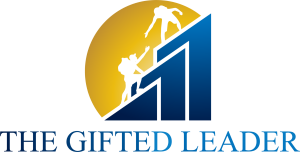Why You Need New Skills as a Leader to Lead Different Generations
Why You Need New Skills as a Leader to Lead Different Generations
Today’s workplace is more diverse than ever—not just in backgrounds or job roles, but in generations. For the first time in history, we have up to five generations working together: Baby Boomers, Gen X, Millennials, Gen Z, and the emerging Gen Alpha. While that kind of diversity can bring innovation, fresh ideas, and a wealth of experience, it also requires leaders to develop new skills to lead effectively across generational lines.
The leadership strategies that worked in the past may not be as effective today. Why? Because each generation comes with its own values, communication preferences, and expectations about work. As a leader, it’s your job to connect with all your team members—not just the ones who think or act like you.
One Size Doesn’t Fit All Anymore
Older leadership models were often top-down, with a strong focus on hierarchy and authority. But younger generations are challenging that model. Millennials and Gen Z, in particular, are looking for purpose, autonomy, regular feedback, and a sense of belonging. They want transparency and flexibility, not micromanagement or rigid structure.
At the same time, Gen Xers tend to value independence and efficiency, while Boomers may prefer stability, in-person collaboration, and a clear chain of command. That’s a lot of different expectations to juggle.
If you try to lead everyone the same way, you’ll likely miss the mark with most of your team. Leadership today requires a high level of self-awareness, communication agility, and emotional intelligence.
The New Leadership Skill Set
The “soft” skills of yesterday are now the core skills of today. Here are some of the critical capabilities modern leaders need to thrive in a multigenerational environment:
Empathy & Emotional Intelligence: Understanding how people feel, what motivates them, and how they respond to different styles of communication is crucial.
Communication Agility: Text, email, Slack, Zoom, in-person meetings—each generation has different preferences. The message must be clear, but the method must also match the audience.
Cultural & Generational Awareness: Be willing to learn about each generation’s values, habits, and work styles without judgment.
Mentorship & Reverse Mentorship: Great leaders learn as much from younger team members as they teach. Be open to two-way learning.
Purpose-Driven Leadership: Especially for Millennials and Gen Z, meaning and impact matter. Help connect their daily work to a larger mission.
Practical Steps to Lead Across Generations
Start with Curiosity
Instead of making assumptions about why someone acts a certain way, ask questions. Get to know your team members’ motivations, values, and career goals. Be open-minded—what seems “entitled” to one leader may actually be a desire for feedback and growth.Be Flexible, Not Frantic
You don’t have to reinvent your leadership style entirely, but you do need to expand it. Be willing to adapt how you deliver messages or assign tasks. Flexibility shows respect and builds trust.Offer Personalized Development Paths
Younger generations want growth opportunities. Older generations may want to leave a legacy. Provide individualized plans that match their goals and timelines.Foster Collaboration, Not Competition
Create opportunities for cross-generational teamwork. Everyone benefits when fresh ideas meet seasoned wisdom.
Leadership isn’t static. It evolves. And in today’s multigenerational workplace, it must evolve faster than ever. Leaders who resist change or fail to recognize generational differences risk disengaging parts of their workforce. But leaders who lean in, stay curious, and adapt with empathy will build stronger, more resilient, and more connected teams.
Are your leadership skills built for today’s diverse workforce?
If you’re ready to grow as a modern, multigenerational leader, I’d love to help you explore the strategies and mindset shifts that will make the difference.
Let’s build a leadership style that reaches every generation—and leads with impact.
